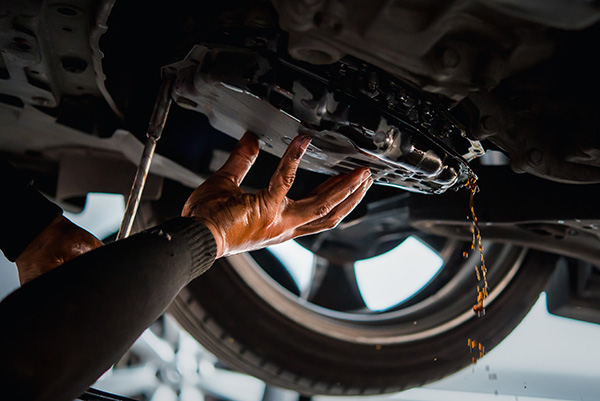
Most people know that low transmission fluid is bad news—but too much of it can cause just as many problems. Overfilling might seem harmless initially, especially if you're just trying to be cautious, but it can lead to shifting issues, pressure buildup, and even internal damage over time.
If your transmission has started acting strange after a recent top-off, there’s a good chance the fluid level might be too high. So what happens when there’s too much fluid—and why should you fix it before it turns into a bigger issue?
The Right Fluid Level
Automatic transmissions are complex systems that rely on precise hydraulic pressure to work correctly. Transmission fluid isn’t just a lubricant—it also transfers power, cools the system, and controls pressure inside the transmission. That’s why getting the level just right is so important.
When there’s too much fluid, it disrupts the balance inside the system. The fluid becomes aerated or foamy, which means it’s filled with tiny air bubbles. That foam doesn't lubricate or pressurize the system properly, and it can lead to inconsistent operation and mechanical wear.
In short, more fluid doesn’t equal better performance. It often means the opposite.
Signs That Your Transmission Is Overfilled
If you’ve recently added fluid yourself—or had a shop top it off—and things haven’t felt quite right since your transmission might be overfilled. Watch for these symptoms:
- Hard or delayed shifting: You may notice hesitation or a clunky response when your vehicle changes gears.
- Slipping transmission: The engine revs, but the car doesn’t accelerate like it should.
- Fluid leaks: Excess pressure in the system can force fluid out of seals and vents, leading to puddles under your car.
- High temperatures: Foamy fluid doesn’t cool properly, so your transmission may run hotter than normal.
These symptoms don’t always appear immediately, but when they do, they usually get worse over time. If left unchecked, overfilled transmission fluid can damage seals, clog filters, or even cause total transmission failure.
How Transmission Fluid Gets Overfilled
The most common cause of overfilling is simply adding too much fluid. This often happens when someone checks the fluid level incorrectly—either not following the procedure for a hot engine or checking it while the car is off. Modern transmissions require very specific conditions to get an accurate reading.
In some vehicles, particularly newer models, the fluid level is meant to be checked with the engine running and the transmission in a certain gear. Skipping steps or guessing can easily result in a misread, and adding fluid based on that mistake only makes things worse.
It’s also worth noting that transmission fluid expands when it heats up. If your fluid was topped off while cold, it could rise past the max line once the transmission reaches operating temperature.
What to Do If You Think It’s Overfilled
If you suspect your transmission is overfilled, don’t keep driving. At the same time, it may seem like a minor issue, continuing to drive with too much fluid can lead to internal damage that’s far more expensive to fix.
Instead, have the system inspected and corrected by a professional. A shop can safely remove excess fluid, inspect for leaks or damage, and ensure your transmission is working the way it should.
This is especially important in warmer climates like Kaneohe, HI, where elevated temperatures can cause fluid to expand even more—making overfilled systems even more vulnerable to overheating.
Preventing Overfilling in the Future
To avoid overfilling your transmission, always follow your owner’s manual or manufacturer’s procedure for checking fluid. In most cases:
- The engine should be at operating temperature.
- The vehicle should be parked on a level surface.
- The transmission should be in the correct gear, usually Park or Neutral.
Use the dipstick or electronic sensor properly, and only add fluid in small amounts.
And when in doubt, let a professional handle it. Transmission fluid is one of the most misunderstood fluids in your vehicle—getting it right takes the guesswork out of maintenance and helps prevent costly repairs.
Whether it’s a minor correction or a complete transmission service, Willy’s Transmission & Air Conditioning in Kaneohe, HI, is here to help keep your transmission in top condition.